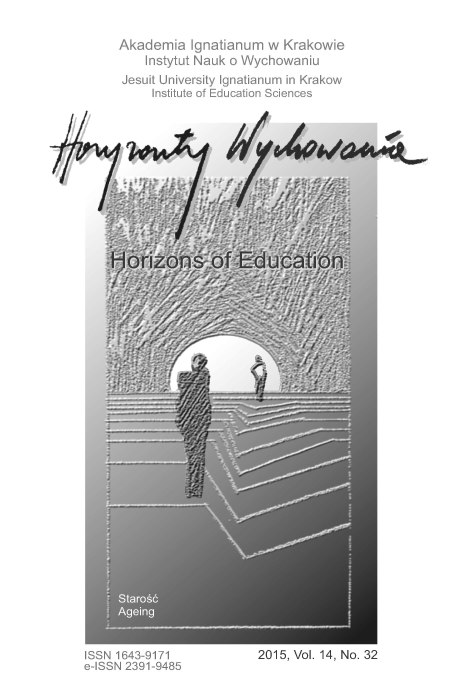Wykorzystanie pracy do stymulowania rozwoju dzieci i młodzieży w systemach wychowawczych XX wieku
Stimulating Child and Youth Development through Work in the Twentieth-Century Systems of Education
Author(s): Tadeusz AleksanderSubject(s): Education, Economic development
Published by: Uniwersytet Ignatianum w Krakowie
Keywords: system of education; laboratory School;
Summary/Abstract: Skuteczność umasowionej w II połowie XIX wieku pracy produkcyjnej zainspirowała filozofów i pedagogów do modernizacji systemu edukacyjnego. Zrodził się ruch związany z wykorzystaniem walorów edukacyjnych i wychowawczych pracy, zwany po latach "szkołą pracy". Miał kilka odmian (kierunków): amerykańską (J. Deweya), niemiecką (szkoła pracy G. Kerschensteinera), belgijską (szkoła życia O. Decroly'ego), rosyjską (szkoła pracy przemysłowej P. Błońskiego), polską (szkoła twórcza H. Rowida), skautową i inne. Najważniejszą cechą wspólną było uformować serca i umysł oraz postawę dzieci i młodzieży przez wykonywanie dobrze zorganizowanej aktywności produkcyjnej. "Szkoła pracy" stała się ponadto mocnym ogniwem reformy oświaty XX wieku o nazwie "nowe wychowanie". Współcześnie fenomen pracy oraz możliwość i sposób wykorzystania jej walorów dydaktycznych i wychowawczych do intensyfikacji procesu nauczania i wychowania są nadal przedmiotem wielu eksperymentów edukacyjnych oraz doświadczeń wychowawczych, nie tylko w edukacji dzieci i młodzieży, ale także uczących się ludzi dorosłych - spostrzeżenie to będzie stanowić myśl przewodnią niniejszego artykułu. The effectivity of the widespread production system developing in the second half of the 19th century inspired philosophers and educators to modernize the system of education. A new movement drew on the educational value of work. It was later called "laboratory school." Its essence consisted in linking education with various forms of pupils' productive activities. The movement had several variants (directions): the American (J. Dewey's), the German (G. Kerschensteiner's "laboratory school"), the Belgian (O. Decroly's "school of life"), the Russian (P. Blonsky's "industrial laboratory school"), the Polish (H. Rowid's "creative school"), scouting and others. This diversity consisted in formulating different goals of education through work, preference for various productive activities, and was due to the different political goals and ethnic characters of respective countries. What most of the varieties of the "laboratory school" had in common was the aspiration towards forming the hearts, minds and attitudes of the children and youth by engaging them in a useful and organized productive activity. In the 20th century the laboratory school became a strong link in the chain of the reform movement called "new education." Nowadays, the phenomenon of work and its applicability for the process of education is still a subject of educational experiments and experiences not only in child and youth education, but in adult education as well.
Journal: Horyzonty Wychowania
- Issue Year: 14/2015
- Issue No: 30
- Page Range: 31-46
- Page Count: 16
- Language: Polish

